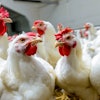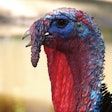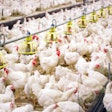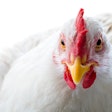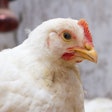
Sanderson Farms on May 27 reported results for its second fiscal quarter and six months ended April 30, 2021.
Net sales for the second quarter of fiscal 2021 were $1.13 billion compared with $844.7 million for the same period a year ago. For the quarter, the company reported net income of $96.9 million, or $4.34 per share, compared with net income of $6.1 million, or $0.28 per share, for the second quarter of fiscal 2020.
Net sales for the first six months of fiscal 2021 were $2.04 billion compared with $1.67 billion for the same period of fiscal 2020. Net income for the first half of the fiscal year totaled $106.4 million, or $4.76 per share, compared with a net loss of $32.5 million, or $1.48 per share, for the first six months of fiscal 2020.
Results for the second fiscal quarter of 2021 reflect an accrual of $6.5 million, or $0.22 per share net of income tax, for a probable contribution to the company’s Employee Stock Ownership Plan (“ESOP”). No accrual was made for an ESOP contribution during last year’s second fiscal quarter. Results for the second fiscal quarter of 2021 also reflect $2.75 million, or $0.09 per share, net of income tax, in uninsured losses associated with the severe winter storms that affected the company’s Texas, Louisiana and Mississippi locations during the quarter. The $2.75 million in losses represent the retention under the company’s property and casualty insurance policies.
The company’s results for the second quarter were also negatively affected by business interruption losses related to the storms. While the company expects to recover some portion of the business interruption losses, it is subject to a seven-day waiting period deductible under the applicable insurance policy. The company continues to work with its insurers, adjusters and accountants to refine the calculation of losses stemming from the storms, as well as the amount of those losses applicable to the deductible period, and any recoveries of the business interruption losses will be recognized once the calculations of the claims and negotiations with the company’s insurance partners are complete.
Results for the second fiscal quarter of 2020 included a net discrete income tax benefit of approximately $37.4 million related to the net operating loss carry-back provisions allowed by the CARES Act, which became law during the second quarter of fiscal 2020. Excluding this discrete income tax benefit, the company’s net loss for the second quarter of fiscal 2020 was $31.3 million, or $1.43 per share.
Executive commentary
“Sanderson Farms operated very well in all areas of our business during the second quarter of fiscal 2021,” said Joe F. Sanderson, Jr., chairman and chief executive officer of Sanderson Farms. “Improved poultry markets more than offset feed grain costs that were significantly higher compared to last year’s second fiscal quarter, resulting in increased operating margins. The improvement in the domestic poultry markets was driven largely by increased demand from food service customers, as U.S. consumers slowly returned to restaurants and several quick serve restaurant chains featured chicken sandwiches on their menus. In addition, export demand also improved during the quarter due to higher crude oil prices, improved liquidity as a result of currency valuations and some relief from COVID-19-related restrictions.”
According to Sanderson, overall realized prices for chicken products sold to retail grocery store customers increased 6.2 cents per pound during the second fiscal quarter of 2021 compared to the same period of last year. Volumes reflected strong demand, as many consumers have continued to prepare more meals at home instead of dining out. In addition, commodity quoted markets for products from the company’s food service plants were significantly higher across the board. Compared with the second fiscal quarter of 2020, quoted boneless breast meat market prices were approximately 60.4 percent higher, the average quoted market price for bulk leg quarters increased approximately 12.3 percent, and jumbo wing quoted market prices were higher by 88.9 percent. Market prices for chicken breast tenders averaged 54.5 percent higher than a year ago. As a result of these market improvements, overall realized prices for chicken products increased 22.3 cents per pound, or 32.6 percent. The company’s average feed costs per pound of poultry products processed increased by 26.6 percent when compared with the second quarter of fiscal 2020, while prices paid for corn and soybean meal, the company’s primary feed ingredients, increased 39.7 percent and 40.0 percent, respectively, compared with the second quarter of fiscal 2020.
“Looking ahead to the second half of the fiscal year, we continue to expect prices paid for feed grain to be significantly higher for the year compared to fiscal 2020,” added Sanderson. “Supplies of both corn and soybeans worldwide relative to estimated demand remain tight. Planting progress in the United States for corn stands at 90 percent this week compared to a five-year average of 80 percent and 87 percent for the same week last year. At the same time, 75 percent of the soybean crop has been planted, compared with a five-year average of 54 percent and 63 percent planted at this time last year. We expect prices through the growing season to be volatile given that good crops of both feed grains are needed to rebuild inventories. Had we priced all of our fiscal 2021 feed grain needs at yesterday’s Chicago Board of Trade closing prices, cash paid for feed grains during fiscal 2021 would be higher by $367.6 million during fiscal 2021 compared to fiscal 2020 using fiscal 2020 volumes. We estimate those higher costs would increase feed cost per pound of poultry processed during fiscal 2021 by approximately 7.5 cents per pound.
“With respect to chicken production numbers, the USDA reports that weekly broiler egg sets are well ahead of 2020 numbers that were negatively affected by COVID-19. However, certain live production challenges, including lower than historical average hatch rates and broiler livability, have resulted in fewer poultry pounds than expected given the size of the layer flock. The current USDA forecast is for United States broiler production during calendar year 2021 to increase by approximately 0.4 percent compared to calendar year 2020. We expect our total production during our third and fourth fiscal quarters of 2021 to be down 0.6 percent and 2.3 percent, respectively, compared to the same quarters of fiscal 2020, primarily because we reduced our target live weight at our Hazlehurst, Mississippi processing plant to better meet demand from our retail grocery store customers. In April 2020, we began reducing production at our plants processing larger birds for food service customers by five percent in response to lower demand at the onset of the pandemic, and by July the planned reduction was fully implemented. We will begin returning those plants to full production starting in June 2021, and expect to be back to full production at all of our food service plants except St. Pauls, North Carolina, and Palestine, Texas, by early September.
“The past fourteen months have been challenging for Sanderson Farms,” Sanderson concluded. “We are navigating a health crisis, and faced historic ice storms and periods of political and social unrest, all while dealing with a global recession and volatile grain and poultry markets. I am grateful for the work and dedication of our employees and everyone associated with Sanderson Farms, and I believe we are a stronger company. Thanks to our team’s efforts, we are continuing to execute on our strategic growth plan, which is supported by strong domestic poultry market demand, and we look forward to announcing the site for our new tray pack poultry complex soon. However, the construction schedule will be delayed until we have better visibility on construction costs and the 2021 grain crops,” Sanderson concluded.

